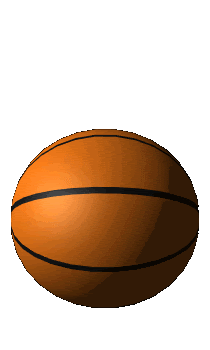Reading is Best with Miss B

Bounce the Basketball with Miss B.
by: Ashleigh Bonovitch
Rationale:
This lesson will help children identify /b/, the phoneme represented by B. The goal for this activity is for students to recognize /b/ in spoken words by learning a memorable representation (bouncing the basketball) and the letter symbol B, they will practice finding /b/ words, and they will apply phoneme awareness with /b/ in phonetic cue reading by differentiating rhyming words from beginning letters.
Materials:
-Primary paper and pencil
-If possible, borrow a basketball from the gym for this activity so children can hear it bounce
-Dr. Seuss’s ABC book (Random House, 1963) or you could use iPads to look at the page with /b/; word cards with BALL, BAT, HAIR, BET, FAN, and BUS
-assessment worksheet identifying pictures with /b/ (URL below).
Procedures:
-
Say: Boys and Girls, our English language is like a secret code and don’t we all want to learn it? It is important for us to learn what letters stand for and we can watch the way our mouth moves as we say words. So today we will work on our letter /b/. We spell /b/ with letter B. B sounds like a ball bouncing and so we will test this idea with a basketball.
-
You can pretend to bounce a ball as I bounce this basketball /b/, /b/, /b/. Let’s pay attention to what our mouth looks like as we say /b/. Our mouth is closed and then opened as we say /b/.
-
Now we can practice saying /b/ in real words. I’m going to say basketball and you can tell me how many /b/ sounds you hear. B-a-b-y. Did you hear two B’s? Let’s all say it together now. B-a-b-y.
-
Let’s try a tongue tickler. Bill buys a big bed. Now we can all say it three times together. We can separate the B from the rest of the word so it would be, “B-ill b-uys a b-ig b-ed.” Now this time we can pretend to bounce a ball every time we hear a B.
-
Boys and Girls let’s practice writing a lowercase b. You’ll need your primary paper and a pencil. We’ll practice writing a lowercase b. We’ll start at the top of the rooftop and draw a straight line to the sidewalk, and then we’ll make a ball from the middle line to the sidewalk to finish our b. I’m going to look at everyone’s B and then once I put a star beside your letter, you can write five more.
-
Call on students to answer and tell how they knew: Do you hear /b/ in ball or chair? Finger or bat? Bet or hair? Fan or bus? Let’s see if you can spot the mouth move /b/ in a few words. Bounce your ball when you hear /b/: Bill bought a blue basketball and a big bowl.
-
In Dr. Seuss’s ABC Alphabet Book, Dr. Seuss tells us some words that start with /b/. He has some silly pictures that we can look at together. What are a few of the things on page 7 that start with /b/? Now lets draw a basketball bouncing on our paper with colored pencils. In the basketball, we can write words that start with /b/. Then we can show our neighbor.
-
Show Ball and model how to decide if it is Ball or Mall: The B tells me to bounce the ball, /b/, so this word is b-all. Let’s try some together now. What about BELL: Bell or cell? BOOK: Book or look?
-
For the assessment, hand out the worksheet. Students are to finish the spellings of the pictures above the word that start with B. You could also call students individually to read the phonetic cue words from step number 8.
Reference:
Assessment worksheet: http://www.kidzone.ws/kindergarten/b-begins2.htm
Click here to return to Travel Index: